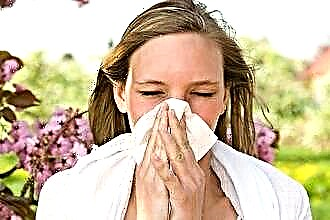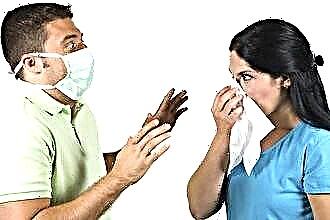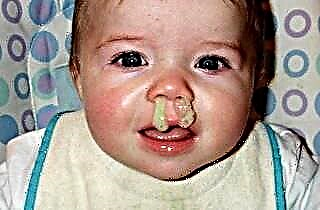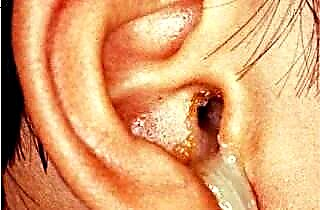The inflammatory process in the maxillary sinuses most often occurs against the background of a bacterial or viral infection, which itself easily passes from person to person. Since sinusitis is a very common disease, people around the patient often have quite reasonable questions: is it possible to become infected with sinusitis? Is sinusitis transmitted? how to avoid it? what preventive measures are there? Let us dwell on these points in more detail.
Opinions about the contagiousness of sinusitis
 When asked whether sinusitis is contagious or not, the majority of doctors are inclined to believe that the disease itself is not contagious.
When asked whether sinusitis is contagious or not, the majority of doctors are inclined to believe that the disease itself is not contagious.
However, one should not relax and lose caution, especially for the family of the sick person. After all, the symptoms of sinusitis are very disturbing: high fever, mucopurulent nasal discharge, sneezing, sometimes coughing, and malaise.
Therefore, when studying the question of whether sinusitis is contagious to others, it is necessary to pay attention to what served as a catalyst for the development of the disease.
After all, viruses and bacteria, which are most often the causative agents of the disease, can be easily transmitted from an infected person to a healthy one.
The greatest number of facts of sinusitis is recorded during periods of seasonal bursts of acute respiratory infections and acute respiratory viral infections.
However, the problem arises whether all types of inflammation of the mucous membranes of the maxillary sinuses can lead to infection of others.
The risk of infection with different types of sinusitis
Despite similar external signs, of the known types of sinusitis, only a few can actively infect other people:
- Viral. The most common type of disease. Its source is viruses that penetrate the upper respiratory tract of a person and cause acute respiratory viral infections, which, under certain conditions, provoke a narrowing of the anastomoses and the further development of sinusitis. Sick people can transmit the virus to others, but this does not mean that sinusitis is transmitted by airborne droplets. Simply, a virus, having entered the body of another person, against the background of a weakened immunity, can cause a number of unpleasant ailments, including sinusitis. Therefore, it would be more correct to perceive such a species as conditionally infectious.
- Bacterial. Its causes are most often streptococci, staphylococci, pneumococci, chlamydia and mycoplasma. These pathogens tend to be transmitted by airborne droplets and by contact. This is also facilitated by the symptomatology of such a disease, which includes secretion, coughing and sneezing. The pathogen transmitted in this way is capable of causing various inflammatory processes of the nasal system in another person.
Other types of the disease, due to the peculiarities of their occurrence and course, practically do not pose a danger to relatives and colleagues:
 Allergic. The causative agent is an allergen, most often of natural origin (animal hair, plant pollen, household dust), the ailment develops from allergic rhinitis with swelling of the connective canals. Does not pose a risk of infection.
Allergic. The causative agent is an allergen, most often of natural origin (animal hair, plant pollen, household dust), the ailment develops from allergic rhinitis with swelling of the connective canals. Does not pose a risk of infection.- Odontogenic. It has a peculiar etiology: the disease passes into the air chambers from the oral cavity through a thin dividing wall. The cause is diseases of the chewing teeth of the upper jaw (pulpitis, caries) or a fistula that occurs during tooth extraction. The risk of transmission of infection is minimal, possible only with close contact.
- Anatomical ("congenital"). It develops when there are individual anatomical features in the nasal cavity that can contribute to the appearance of sinusitis. These are mainly deformation of the nasal septum, narrowed fistulas, hypertrophy of the nasal concha, foreign objects or bone fragments that have entered the sinus as a result of injuries or unsuccessful operations. Does not pose a danger to others.
- Polypous. In this case, the connecting canal is blocked by tissue proliferation: a polyp or a cyst. Not contagious.
- Chronic. Almost all of its varieties (parietal, hyperplastic) in remission are not dangerous due to the minimal spread of microbes.
The danger from the above types of the disease can come only with its exacerbation and the addition of a bacterial component.
What to do if there is a sinusitis patient in the family?
In most cases, a person with sinusitis is the source of viruses or disease-causing bacteria. Therefore, it makes no sense to speculate whether sinusitis is contagious; measures must be taken to minimize the spread of the causative agent of the disease.
If sinusitis is bacterial, it means that the rest of the family members have a probability of about 70% that they also have these bacteria in their bodies, but they do not get sick, being asymptomatic carriers.
All of them are unequivocally at risk. For the most part, the question of whether family members get sick or not is determined by the state of the immune system of each of them. However, the risk of infection can be reduced by taking a few simple steps.
- Quarantine measures. A sick person should be placed in a separate room and contact with all family members should be limited, especially children and the elderly, in whom, due to age-related changes, the body's defenses are often weakened.
 Strictly follow all the prescriptions of the attending physician regarding the recommended medications, procedures and treatment regimen (usually bed). When communicating with a patient, use a protective medical mask or gauze bandage.
Strictly follow all the prescriptions of the attending physician regarding the recommended medications, procedures and treatment regimen (usually bed). When communicating with a patient, use a protective medical mask or gauze bandage.- Conduct regular ventilation of the room to remove pathogenic microorganisms and wet cleaning to normalize the air in the room.
- Observe personal hygiene measures that prevent the spread of microbes (washing hands, irrigating the nasal cavity).
- Increase the level of body resistance by taking vitamin complexes with trace elements, good nutrition, hardening, physical activity and moderate physical exertion. It is also important to observe the regime of rest and work.
What to do to avoid infecting others
Not only should the family take care of the sick person, but he himself should feel responsible for the health of those around him and his colleagues at work. Therefore, a person must independently limit communication with other people if he has signs indicating the development of inflammatory processes in the maxillary cavities:
- The onset of discomfort in the nose, which over time give way to a general headache, weakening in the morning, but getting worse in the evening. At first, the pain is not clearly localized, but gradually its place is more and more outlined by the area of the nose and the projection of the sinuses, especially when bending forward.
- Swelling of a part of the face, usually on the affected side.
- The appearance of a stuffy nose, a runny nose, and shortness of breath. The discharge is often yellowish brown in color and has an unpleasant odor.
- Changes in the voice that becomes deaf and nasal.
- Increased body temperature, general weakness, chills.
With such symptoms, it is advisable not to be in crowded places, to limit communication with relatives, and not to play with children.
It is necessary to see an otolaryngologist as soon as possible in order to start timely therapy and receive a sick leave in order to avoid the spread of the disease.

 Allergic. The causative agent is an allergen, most often of natural origin (animal hair, plant pollen, household dust), the ailment develops from allergic rhinitis with swelling of the connective canals. Does not pose a risk of infection.
Allergic. The causative agent is an allergen, most often of natural origin (animal hair, plant pollen, household dust), the ailment develops from allergic rhinitis with swelling of the connective canals. Does not pose a risk of infection. Strictly follow all the prescriptions of the attending physician regarding the recommended medications, procedures and treatment regimen (usually bed). When communicating with a patient, use a protective medical mask or gauze bandage.
Strictly follow all the prescriptions of the attending physician regarding the recommended medications, procedures and treatment regimen (usually bed). When communicating with a patient, use a protective medical mask or gauze bandage.

